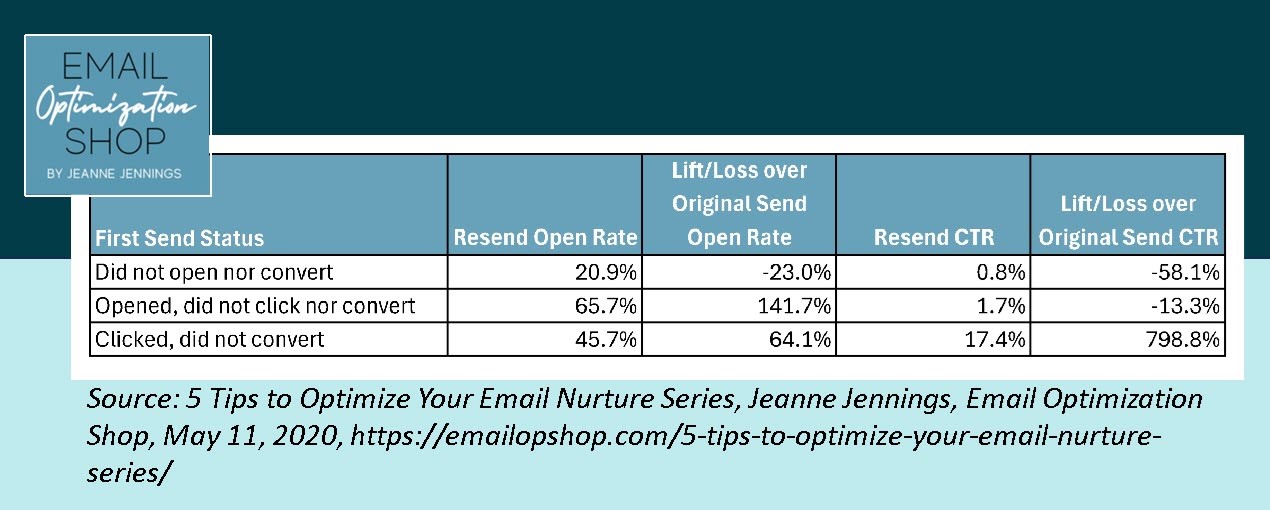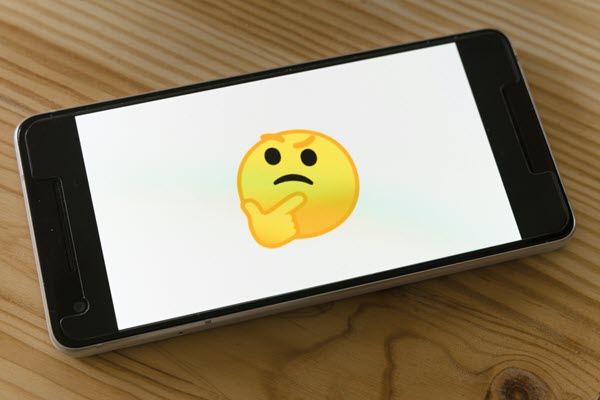During the Only Influencers (OI) members-only live discussion a few weeks ago we ended up on a familiar topic: email resends.
But the discussion took a twist which has me rethinking my personal stance on them – and how I’ll recommend my clients handle them.
I wanted to share it here because this may impact your thinking as well.
Sean Duffy, Segmentum, was leading the discussion on his latest for the OI blog, here’s the quote that started the conversation…
| “Customers are failing to open your emails because they are busy – it’s not a judgement on the quality of the email and its content. So, get that frequency up. And a great place to start experimenting with this is resending to non-openers.” Source: How customers’ unconscious decisions impact your email marketing, Sean Duffy, Segmentum, for the Only Influencers Blog, March 5, 2024 |
Years ago, pre-MPP, I did a series of resends, segmented by action taken or not taken on the first email. The results are below.

You can see that the group that clicked but did not convert on the original email performed very well, much better than the other groups, with regard to click-through rate (CTR) on the resend. The CTR for this group on resend was over 17% — that’s nearly nine times the CTR for the full audience on the original send.
As a result of this work, I stopped doing resend to non-openers. My experience, from this analysis and other work, is that the non-openers don’t open or click as well as the full audience did on the original send. We also see an increase in unsubscribes and spam complaints when we do resends to this group, which we don’t see when we resend to those who clicked but did not convert.
You can read more case studies about strategic resends on this blog.
But here’s the comment during the live discussion that got me rethinking my strategic resend strategy.
One of our OI members mentioned that a brand whose content she loves frequently does resends of their emails with an ‘ICYMI’ (in case you missed it) moniker at the front of the subject line. She said that she always finds value in their emails, so when she sees the ICYMI moniker she makes sure to open it, figuring she may have missed something they sent.
When people ask me about the perfect email frequency, my standard answer is that it varies depending on the relationship the recipient has with your brand.
I find this to be very true. So, if it’s true for frequency in general, shouldn’t we also be applying it to resends?
And if we did this, how could it work?
Perhaps when we do a resend, we look at the segment of people who open a large percentage of the email messages we send – let’s say 75%. And then we do the resend to just those in this group who did not open this particular message.
By looking at past behavior it really is like doing a customer service, in case they just happened to miss seeing this particular email in their inbox. And it solves one of the biggest problems with broader resends to non-openers – which is sending yet another email to someone who has lost interest in your brand.
This strategy also works in our MPP world, since most MPP opens should be consistent from send to another. If MPP opened the last 60 emails, chances are it opened the most recent one as well, and so it would not qualify for a resend to non-openers.
I’m going to test this – not instead of my traditional strategic resends to those who click but did not convert, but in addition to it. Why don’t you do the same and let me know how it goes?
And if you enjoy discussions like this about email, you should join Only Influencers (OI)! Then you can join us on Thursdays to discuss recent industry articles with the authors and other members of OI. Reach out to me to learn more – or just apply for membership online.
And if you’re looking to improve the bottom-line performance of your email marketing — let’s chat! Clients rely on me for strategy/tactical consulting, fractional Director/VP roles, and workshop training.
jj
This post was written by Jeanne Jennings, Email Optimization Shop, and originally published on April 8, 2024 on the Only Influencers blog.
 Photo by Markus Winkler on Unsplash
Photo by Markus Winkler on Unsplash






